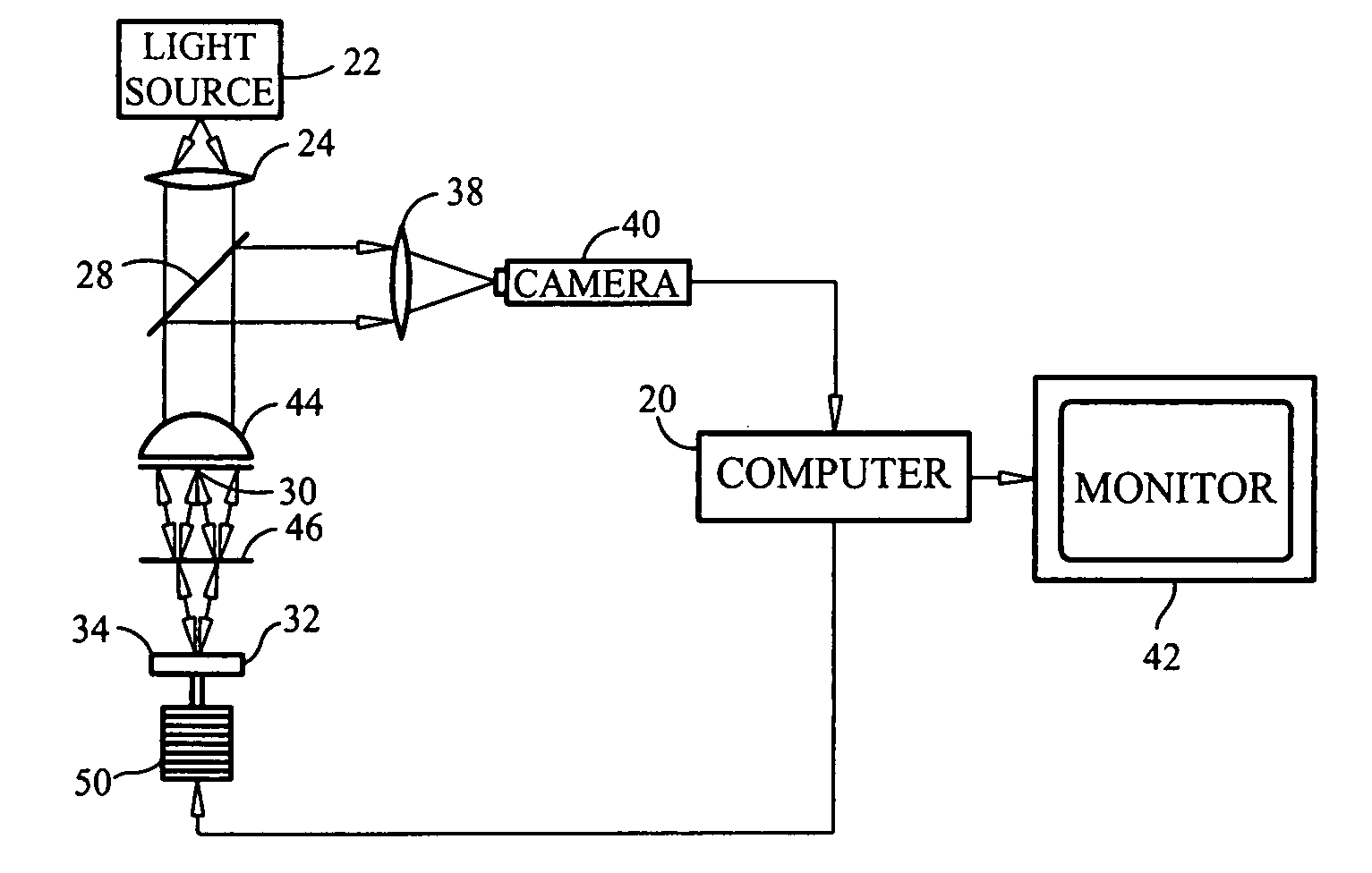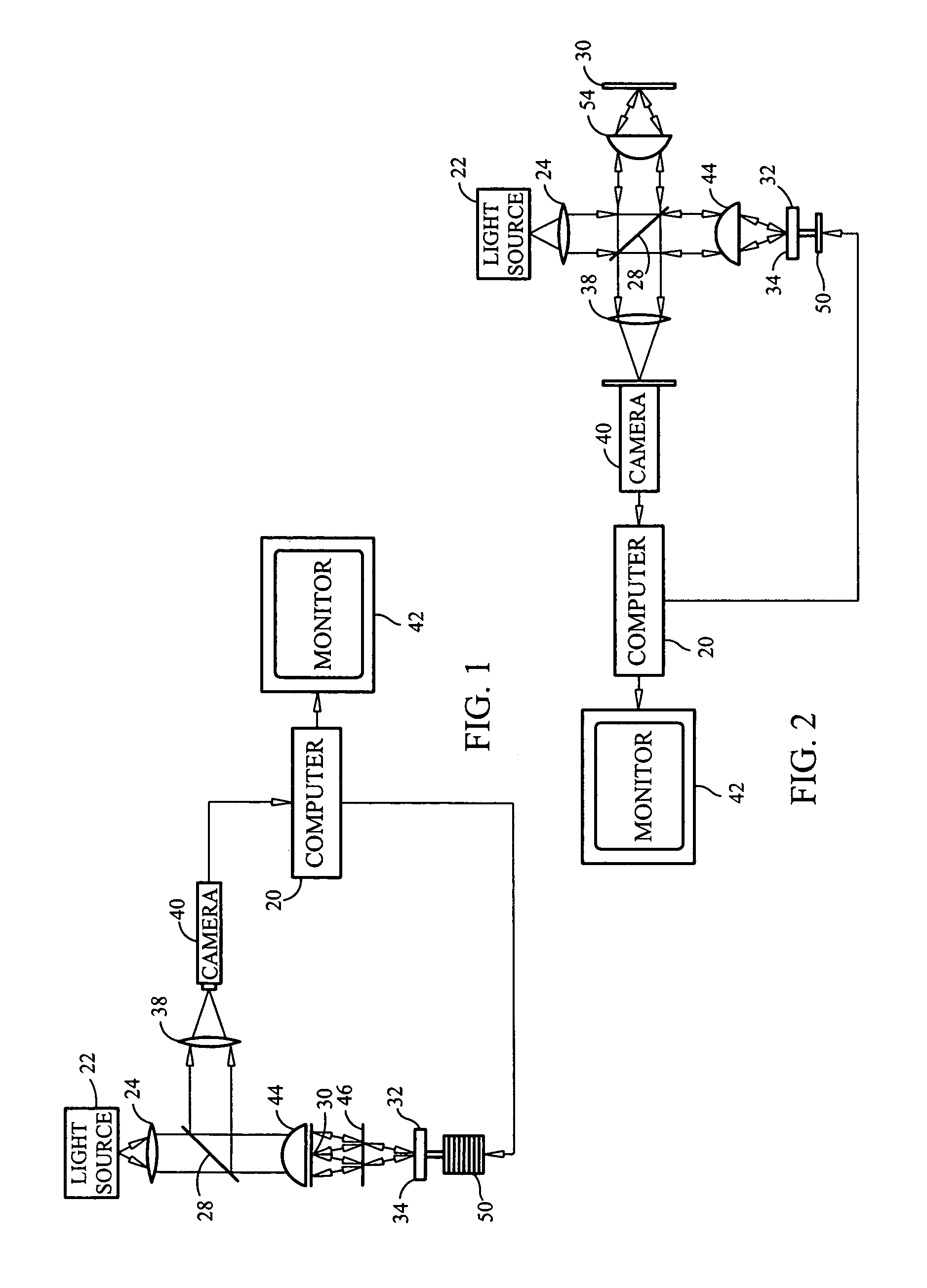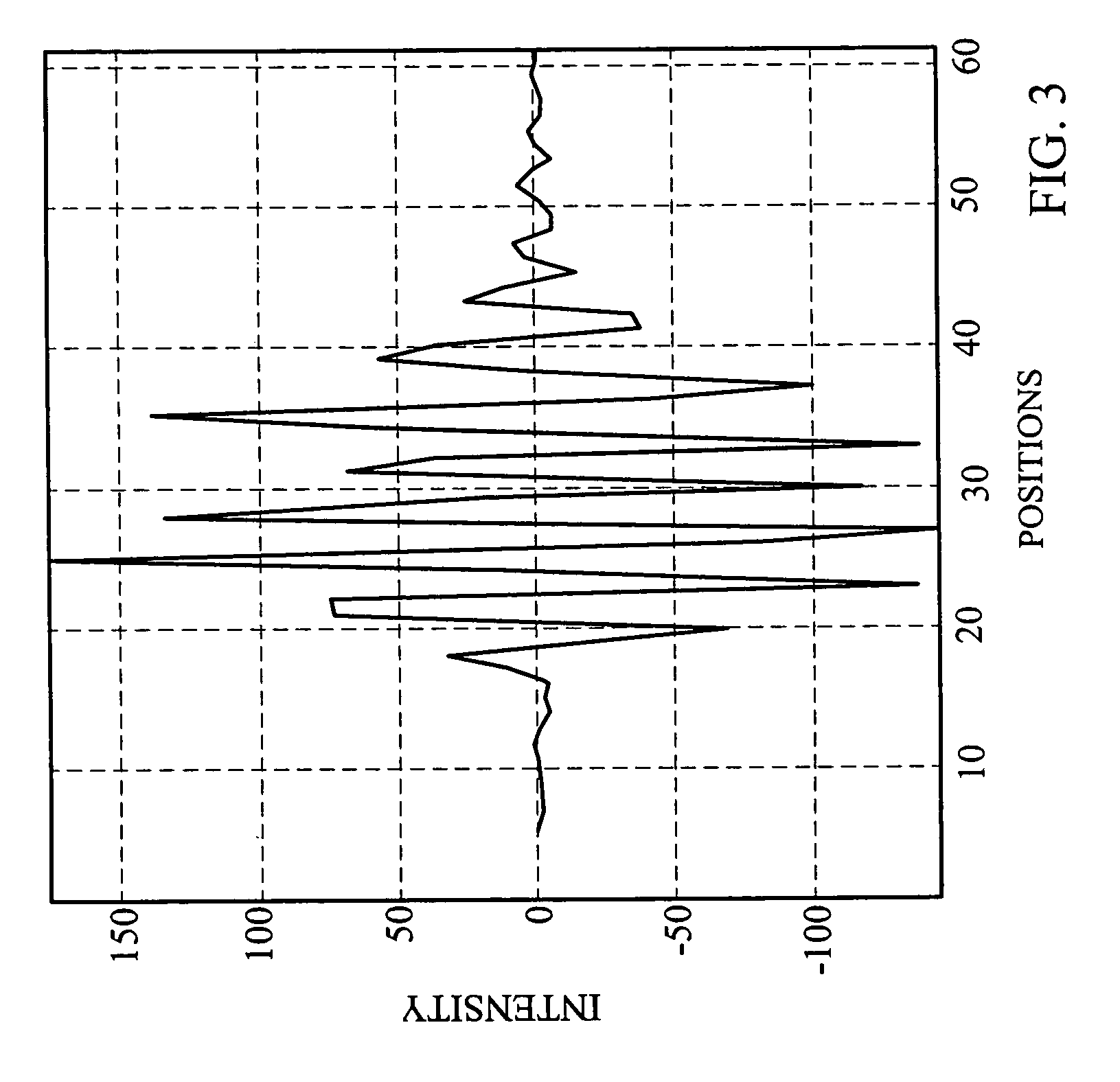Temporal interferometric signal modeling with constant phase shift in white light interferometry
a technology of interferometry and signal modeling, applied in the field of white light phase shifting interferometry, can solve the problems of inability to profile objects with uniform surfaces, non-linear phase of interferogram change, and loss of wlpsi's ability to profile such objects
- Summary
- Abstract
- Description
- Claims
- Application Information
AI Technical Summary
Problems solved by technology
Method used
Image
Examples
Embodiment Construction
[0011]FIG. 1 is a schematic diagram of a Mirau interferometer system which may be used in conjunction with the practice of the method of the various embodiments of this invention. As shown in FIG. 1, the interferometer is controlled by a processor or computer 20 which coordinates the operation of a phase shifting driving mechanism 50 with other components of the system. The white light from the source 22 is supplied through a collimating lens 24 to a beam splitter 28 which supplies the collimated light to an objective lens 44. The lens 44 in turn supplies light to a reference flat in the form of a reference mirror 30, and to a further beam splitter 46 in accordance with the conventional operation of such an interferometer.
[0012]The reflected light beams from both the reference flat 30 and from both surfaces of a measurement object or test piece 32 are directed by the beam splitter 28 to an imaging lens 38, which supplies simultaneously multiple interferograms to a CCD camera 40, or ...
PUM
 Login to View More
Login to View More Abstract
Description
Claims
Application Information
 Login to View More
Login to View More - R&D
- Intellectual Property
- Life Sciences
- Materials
- Tech Scout
- Unparalleled Data Quality
- Higher Quality Content
- 60% Fewer Hallucinations
Browse by: Latest US Patents, China's latest patents, Technical Efficacy Thesaurus, Application Domain, Technology Topic, Popular Technical Reports.
© 2025 PatSnap. All rights reserved.Legal|Privacy policy|Modern Slavery Act Transparency Statement|Sitemap|About US| Contact US: help@patsnap.com



